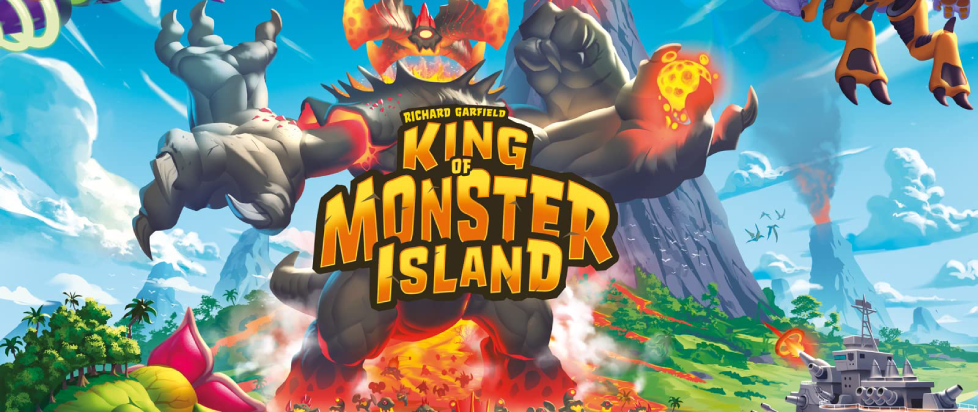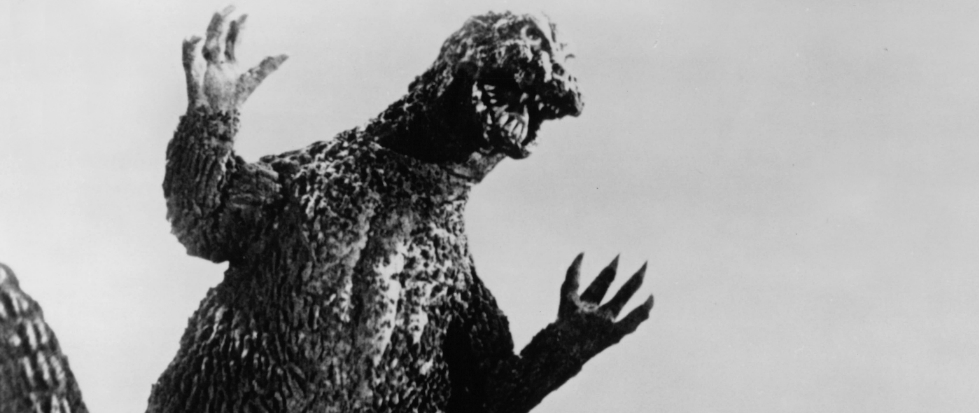
Collaborative Chaos: Being on the Top of the Heap in King of Monster Island
I see board games in the store and they always look so cool and then I buy them and bring them home, I’m so excited to open them, and then I play them, like, twice… This column is dedicated to the love of games for those of us whose eyes may be bigger than our stomachs when it comes to playing, and the joy that we can all take from games, even if we don’t play them very often.
———
In the course of more than three years (how???) of doing this column, I’ve written about quite a few games that have meant a lot to me. Games that changed how I think about what board games are and what they’re capable of. Games that served as important touchstones as I changed, over the years. Titles like Betrayal at House on the Hill, Dominion, Warhammer Quest, and more. All of those games and many others were and are central to me and my affection for the form, but none of them are my favorite. In fact, I don’t always have a clear favorite on some things, but when it comes to board games, I’m pretty sure I do.
King of Tokyo may seem like a pretty obvious choice for my affections, simply from a thematic point of view, but there are also other reasons why the game holds a special place in my heart. I was first introduced to it while visiting college friends who were more likely family, despite the fact that they had moved halfway across the country.
That whole trip was a pleasure. An opportunity to reconnect with found family that I hadn’t seen in far too long. Playing King of Tokyo around their kitchen table is a warm spot in my memory. Even if it wasn’t, though, King of Tokyo is a great game, and one that appeals to me for, as I said, obvious reasons.
It captures the fun and the scale of kaiju, and the cartoony artwork – especially on the sadly now out-of-print first edition – is never anything short of a delight. No one who knows me is going to be at all surprised when I express my enthusiasm for King of Tokyo. After being introduced to it on that trip, my spouse managed to snag me one of those first edition copies, with the art I preferred, and I built up a collection of pretty much every expansion ever released for it, including some holiday-themed convention exclusives. (My favorite is Crabomination. Also probably not a surprise.)

But it isn’t just my fond memories or my affection for kaiju that makes King of Tokyo a great game. The box is fairly plastered with the various awards it has won, from a pile of Golden Geeks to Major Fun awards and more. The game’s design and mechanics are simplicity itself, but it is endlessly entertaining, and great for playing in a group.
There’s just one problem and, for me and how I play games, it is a big one. King of Tokyo is a head-to-head game, where you’re directly challenging and attacking the other players. Not usually my favorite play style, though it works like gangbusters here. And despite what the box says, you really need at least three people for the game to work the way it’s supposed to – more is better.
Enter King of Monster Island. Packed into a much bigger box, King of Monster Island takes the basics of King of Tokyo and transforms them into a co-op experience in which all the players take control of various kaiju attempting to take down an even bigger kaiju controlled by the board. This bigger kaiju (the game comes with three potential permutations of essentially the same creature, each one harder to fight than the last) is trying to open a portal with the help of a variety of adorable minions, and the “good” kaiju need to put a stop to it.
Perhaps the best thing about King of Monster Island is that it is designed to let you use any of the monsters from King of Tokyo, all of which are (and always were) functionally identical except for their appearance. It also includes five new monsters, among them a giant plant, a robotic battleship, an odd cross between moth and honeybee, a sea monster, and something that might be the moon, if the moon were also a spaceship.
While the monsters are the same, and the dice mechanics will be familiar enough to make transitioning easy for anyone familiar with King of Tokyo, the dice and cards of Monster Island are the unique to it, and nothing about the games is interchangeable except the kaiju themselves. This is partly because Monster Island adds several new mechanical wrinkles – including new die faces – to the struggle to overcome the powerful boss monster.
It also means that Monster Island is not the nearly perfect synthesis that King of Tokyo was. Honestly, even King of Tokyo has its problems, including that it basically can’t be functionally played with only two players, no matter what it may claim to the contrary. Monster Island’s imperfections are similar, namely that there is very little in the way of scaling for the number of players you have.

On every player’s turn, the boss monster also activates, adding a bit of scaling. But it’s still going to be a very different game with five people than with one or two and, like King of Tokyo, it is clearly going to be at its best as a party game, with the maximum number of monsters clomping around the board. Those wrinkles I mentioned also reduce the admirable simplicity of the game’s base mechanic.
In addition to moving and hitting your enemies and buying upgrades to make you better, you’ll also be dealing with the boss’s minions coming out and doing various things, the boss moving around, bringing in support ships that can grant you extra dice, locking dice into place so that you or other players can use them on future turns, and recruiting allies to your side that improve your abilities. All this is integral to success, but it can also feel like a bit much compared to the game’s streamlined predecessor.
There’s also the mechanic of how the boss moves and activates. It takes some getting used to, but is fairly straightforward once you do. In the center of the game board (which represents the eponymous island) there is a plastic-and-cardboard volcano, into which you drop dice. These dice, and which section of the board they roll onto, denote not only where the boss moves, but what it does once it gets there. The idea is nice, but the dice, when dropped in, have a tendency to go careening off the board, or knock other tokens or “locked” dice from their positions.
Ultimately, these are all fairly minor quibbles, but they are quibbles, nonetheless. Even with them, King of Monster Island was pretty fun to play, like, twice, and I think it will only get to be more fun as I become more familiar with it. Moreover, we played it with only two people and, like King of Tokyo, it will be particularly well-suited for larger groups. That Monster Island lacks the simple excellence of its predecessor is not too damning a condemnation, after all – most things do.
———
Orrin Grey is a writer, editor, game designer, and amateur film scholar who loves to write about monsters, movies, and monster movies. He’s the author of several spooky books, including How to See Ghosts & Other Figments. You can find him online at orringrey.com.





